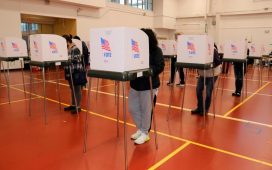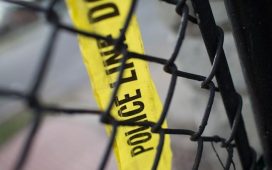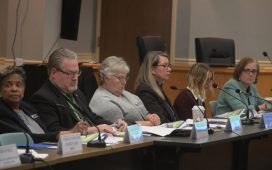Less than three years after announcing a transition from the legacy lip tattoo system to a more efficient and accurate horse identification method, the Thoroughbred Racing Protective Bureau (TRPB) announced today that over 35,000 Thoroughbreds have now been Digitally Tattooed.
The Digital Tattoo is an electronic authentication confirming the identity of a horse by a trained TRPB technician.
“Every racing 2-year-old, every 3-year-old and a significant share of 4-year-olds have Digital Tattoos and by the end of 2021, we estimate that 75 percent of Thoroughbreds will enter the racetrack paddock with a Digital Tattoo,” said J. Curtis Linnell, executive vice president, TRPB. “We have 56 TRPB Technicians under contract throughout the United States and Canada and even with the COVID-19 pandemic, they have been able to inspect, document and authenticate the identity of Thoroughbreds before their first lifetime start.”
The Digital Tattoo process begins when the technician scans the horse’s microchip and if correctly reported, the microchip number hyperlinks to The Jockey Club electronic registration information viewed on a tablet.
Using the foal pictures as a reference, each markings description is compared to the horse’s physical markings. After the markings, color and sex of the horse are verified, the technician documents the horse by taking 12-14 digital photos. These pictures are uploaded to The Jockey Club’s Registry database thus becoming part of the horse’s digital record.
The TRPB technician then affixes a TRPB logo on the electronic certificate of registration. This seal indicates that the TRPB has verified the identity of the horse and certified that the Thoroughbred is digitally tattooed in the breed registry’s database.
“The new system has been well received not only by horsemen but also by racing office personnel and regulatory officials,” Linnell said. “We were thrilled to see that this year’s 14-race Travers Day card at Saratoga Race Course featured every horse on the card, with one lone exception, sporting a Digital Tattoo.”
Even with the success and widespread adoption of the new system to date, the TRPB is striving for improvement in two areas: increased awareness and deployment of the InCompass Solutions Digital Identifier mobile app for race day horse identification; and broader utilization by the entire horse racing industry of Digital Tattoo information.
The accuracy of the identification process starts with the breeder reporting the microchip number as part of the foal’s registration.
“We can’t overemphasize the importance of getting the microchip reported correctly,” said TRPB’s manager of technician operations, Teena Appleby. “This is the only way our technician can start the process of authenticating the horse’s identify. A microchip sitting in a desk drawer isn’t helping anyone.”
“The use of the Digital Identifier mobile app is the only way to identify horses on race day,” according to Appleby.
With a username and password provided by InCompass, horse identifiers, race office personnel, barn area security and other racetrack officials may automatically access the digital tattoo file that includes the photo of the horse’s face, photos of every marking, the name of the horse, the horse’s color, and the certificate of foal registration from The Jockey Club.
“These individuals now have immediate access to the horse’s picture ID, which is akin to a passport or driver’s license and with more identification tools than they’ve ever had available previously,” Linnell said. “A Thoroughbred should never have to be scratched from a race because of an identification issue, or have an incorrect horse be permitted to start in a race.”
TRPB Agent Rachael Mant, based at TRPB Headquarters in Maryland, makes a weekly visit to the Fair Hill Training Center to digitally tattoo Thoroughbreds. Trainers there have embraced the new system.
“This system has been working out great,” said Mike Trombetta. “The days of lip tattoos are in the rear-view mirror.”
Trainer Keri Brion believes: “the digital ID system is way better because you can always see them. It’s much easier and I much prefer it.”
Trainer Arnaud Delacour said: “Tattoos in older horses can be very hard to read and it’s a big plus if we don’t have to flip the lip before a race.”
Trainer Graham Motion says he wishes the Digital Tattoo system had been adopted 10 years ago.
“This system is much more up to date. It’s a clearer version of identifying horses and keeping tabs on them. It’s much more organized and much easier.”
Lori Wydick, paddock horse identifier for two Ohio race tracks, said: “I prefer to see the horse’s identifiable markings in the photos of the horses in the Digital Identifier program. The program has current photos from their Digital Tattoos as well as the registration photos of the horses. Photos are undeniable forms of identification. Photos of cowlicks, night eyes, and any other identifiable marking is invaluable.”
The TRPB is an investigative agency formed in 1946 by the Thoroughbred Racing Associations of North America to protect the integrity of the sport.
New to the Paulick Report? Click here to sign up for our daily email newsletter to keep up on this and other stories happening in the Thoroughbred industry.
Copyright © 2021 Paulick Report.








